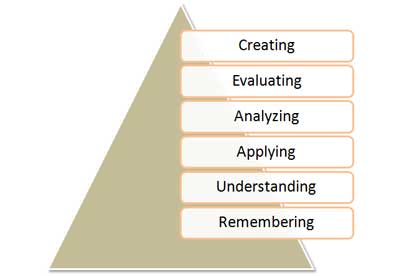Being a researcher my training in how to teach was (is) near zero. Lucky me I have interacted with wonderful peers that are a great source of inspiration and information, and I am part of several active learning communities. I have decided to put everything together here to make it easier for you (and me) to walk this path.
Courageous Conversations about Race
Mentoring postdocs and young faculty
Faculty Mentoring - Office of Faculty and Organizational Development at Michigan State University.
FemaleScienceProfessor talks about their practice on Postdoc Mentoring.
A post in the JuniorProf blog Your postdoc mentor should be an effective advocate for your career development…
The National Postdoctoral Association on Developing a Postdoctoral Mentoring Plan.
The Office of Intramural Training and Education at the NIH gives really good training opportunities for postdocs. Others could learn to mentor from them…
Virginia Gewin in Nature: Learning to mentor.
Betty Neal Crutcher writes Mentoring Across Cultures on Academe Online.
Richard Hain talks about Mentoring students and postdocs from the Department of Mathematics at Duke University.
In a broad sense, the mentoring of postdocs is to prepare them to be more effective faculty members, if they are headed to academia, or to guide them towards the kind of interdisciplinary research experiences valuable for those who intend to work in industry or government labs.
National Academy of Sciences Report, "Enhancing the Postdoctoral Experience for Scientists and Engineers: A Guide for Postdoctoral Scholars, Advisers, Institutions, Funding Organizations, and Disciplinary Societies," 2000. (available to read free online).
The HHMI lab management handbook Making the Right Moves: A Practical Guide to Scientific Managements for Postdocs and New Faculty is available on-line.
I recommend the book Lab Dynamics: Management Skills for Scientists by Carl M. Cohen and Suzanne L. Cohen.
The Office of Research Integrity at the US Department of Health and Human Services presents a guide for Mentoring International PostDocs made by the Children’s Hospital of Philadelphia in which some cases are presented in video. The guide is available in pdf here.
I wish I had found this earlier: International Postdoc Survival Guide, from the National Postdoc Association.
And some resources from The University of Wisconsin-Madison Graduate School on Mentoring:
The American Association of Medical Colleges (AAMC) has created a Compact between Postdoctoral Appointees and Their Mentors, which is "intended to initiate discussions ...about the postdoctoral appointee-mentor relationship and the commitments necessary for a high quality postdoctoral training experience." The AAMC suggests various ways it can be used in order to create mutual expectations for training between postdocs and their mentors.
An annual review and an Individual Development Plan for Postdoctoral Fellows developed by Federation of American Societies for Experimental Biology (FASEB) provides a planning process that identifies both professional development needs and career objectives.
UW-Madison offers informal and formal activities for postdocs to improve their teaching and mentoring skills through the Delta Program in Research, Teaching and Learning and the Annual Teaching and Learning Symposium.
Backward Design
The basic steps of backward design of a teaching practice are: Identify the desired results >> Determine acceptable evidence >> Plan learning experience
One starts with the end - the desired results (goals or standards) - and then derives the curriculum from the evidence of learning (performances) called for by the standard and the teaching needed to equip students to perform (Wiggins and McTighe, 2000, page 8).
The guide Principles of Backward Design by the Tasmanian (Australia) Department of Education is based on the Expanded 2nd edition of the book Understanding by Design by Grant Wiggins & Jay McTighe, which was published in 2005 by Pearson Education and the Association for Supervision & Curriculum Development.
The design process involves teachers planning in 3 stages, each with a focusing question:
• Stage 1 - What is worthy and requiring of understanding?
• Stage 2 - What is evidence of understanding?
• Stage 3 - What learning experiences and teaching promote understanding, interest and excellence?
[Digital] literacy has a scheme of the process
Bloom’s taxonomy
Domains can be thought of as categories. Trainers often refer to these three categories as KSA (Knowledge, Skills, and Attitude). This taxonomy of learning behaviors can be thought of as “the goals of the learning process.” That is, after a learning episode, the learner should have acquired new skills, knowledge, and/or attitudes.Lorin Anderson, a former student of Bloom, revisited the cognitive domain

Crowe et al. 2008; Biology in Bloom: Implementing Bloom's Taxonomy to Enhance Student Learning in Biology
Useful Process Clues at the Karen L. Smith Faculty Center for Teaching and Learning
Measuring Excellence in Diversity
Hazelkorn and Huisman 2008 in Higher Education Policy; Higher Education in the 21st Century — Diversity of Missions
How should quality and excellence be measured? Are there different definitions or metrics depending upon the type of institution or mission? Some people argue that excellence is a normative concept requiring international benchmarks, while others say there can be different ways of measuring excellence and achievement, including impact measurements. Most national and global rankings, for example, only measure research because there is publicly available data. Yet, higher education institutions are more complex. As Einstein's famous sign in his office read: ‘Not everything that counts can be counted, and not everything that can be counted counts’.
Romney et al. 2008; Measuring the Success of Diversity Directors in Independent Schools; it’s a bit out of scope, but includes a few references in the introduction that might be useful.
Clayton-Pedersen et al. Making Excellence Inclusive. This paper has a chart that compares the traditional versus the inclusive notions of excellence and lays out each of them for students, faculty, administrators and staff, the curriculum and the institutional environment.
Measuring the Effectiveness of Diversity Efforts (in companies). The author, Tracy Brown, is the President of Diversity Trends LLC, and wrote 71 ways to demonstrate commitment to diversity